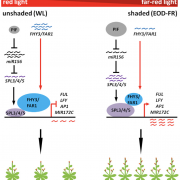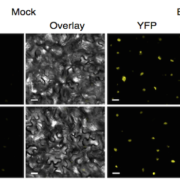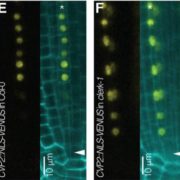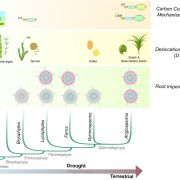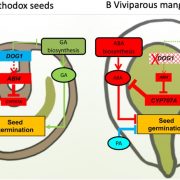Suns out, guns out: Plant defense responses are enhanced under long-day photoperiods ($)
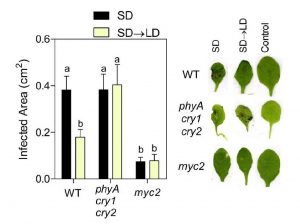 As sessile organisms, plants must constantly sense and respond to a dynamic range of stimuli in their environment, which includes both the duration of light (photoperiod) and the presence of microbial invaders. In a recent article published in Plant Physiology, Cagnola et al. (2018) investigate how plant defense responses are affected in Arabidopsis exposed to increased day length (short to long-day transition). The authors demonstrate that short-day grown plants exposed to a long-day photoperiod activate jasmonic acid-related defense responses that afford enhanced resistance to the necrotrophic fungal pathogen Botrytis cinerea. Genetic analyses further demonstrate that such photoperiod-induced disease resistance is dependent on photoreceptors (phyA/cry1/cry2) and is regulated (negatively) by the master photomorphogenesis regulator COP1. Together these results further corroborate the observation that plant defense responses are tightly linked with environmental conditions in Arabidopsis, which has great implications for crop performance in agricultural fields. (Summary by Phil Carella) Plant Physiol. 10.1104/pp.18.00443
As sessile organisms, plants must constantly sense and respond to a dynamic range of stimuli in their environment, which includes both the duration of light (photoperiod) and the presence of microbial invaders. In a recent article published in Plant Physiology, Cagnola et al. (2018) investigate how plant defense responses are affected in Arabidopsis exposed to increased day length (short to long-day transition). The authors demonstrate that short-day grown plants exposed to a long-day photoperiod activate jasmonic acid-related defense responses that afford enhanced resistance to the necrotrophic fungal pathogen Botrytis cinerea. Genetic analyses further demonstrate that such photoperiod-induced disease resistance is dependent on photoreceptors (phyA/cry1/cry2) and is regulated (negatively) by the master photomorphogenesis regulator COP1. Together these results further corroborate the observation that plant defense responses are tightly linked with environmental conditions in Arabidopsis, which has great implications for crop performance in agricultural fields. (Summary by Phil Carella) Plant Physiol. 10.1104/pp.18.00443


